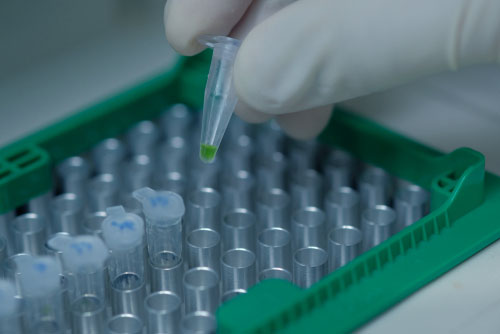cDNA synthesis from RNA extraction from tissue and cell

cDNA synthesis from RNA extraction from tissue and cell
Determining the amount of mRNA is essential for accurate examination of genes expression. The basic PCR mechanism involves DNA replication as a nucleic acid pattern but not RNA. Thus, the first step is the synthesis of DNA named complementary deoxyribonucleic acids (cDNA) from an RNA template, via reverse transcription.
A reverse transcriptase (RT) is an enzyme used to generate complementary DNA (cDNA) from an single-stranded RNA template. There are several types of RT enzymes: HIV-1, AMV, MMLV, and telomerase reverse transcriptase enzyme.
The cDNA can be synthesized using total RNA or purified mRNA.The required materials for this reaction are including buffer, dNTP, RNase-free water, reverse transcriptase enzyme, and RNA.
Three types of primers can be used in the cDNA construction process:
- The desired gene Specific Primers
- Random hexamer Primers that can reproduce RNA types.
- Oligo (dt), which is specifically attached to the poly(A) tail at the end of the mRNA and replicate it.
The cDNA replication specifically occurs in the temperature range 37 to 50 °C, for each kit. At the end of the reaction, the enzyme inactivation was performed over a temperature range of 75 to 95 °C.
Related posts: Removal of genomic DNA contamination during total RNA extraction – Quantitative analysis of the extracted RNA cell or tissue with spectrophotometer
